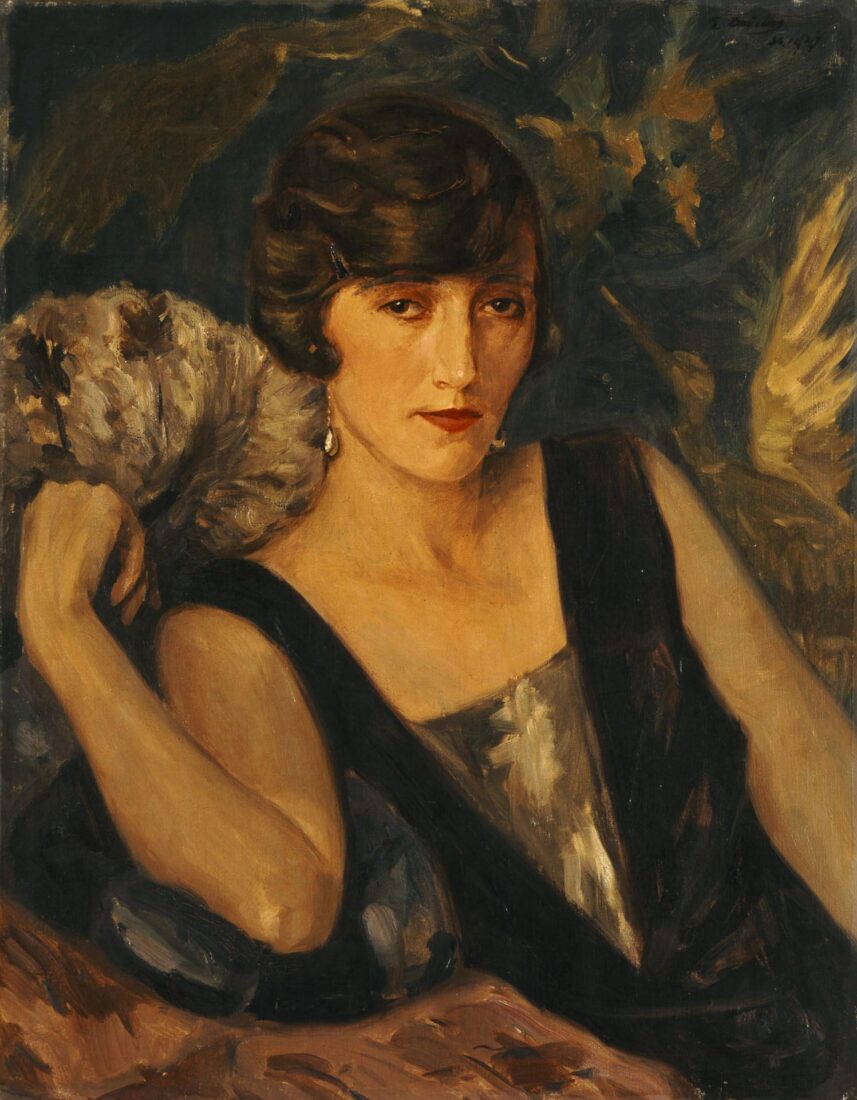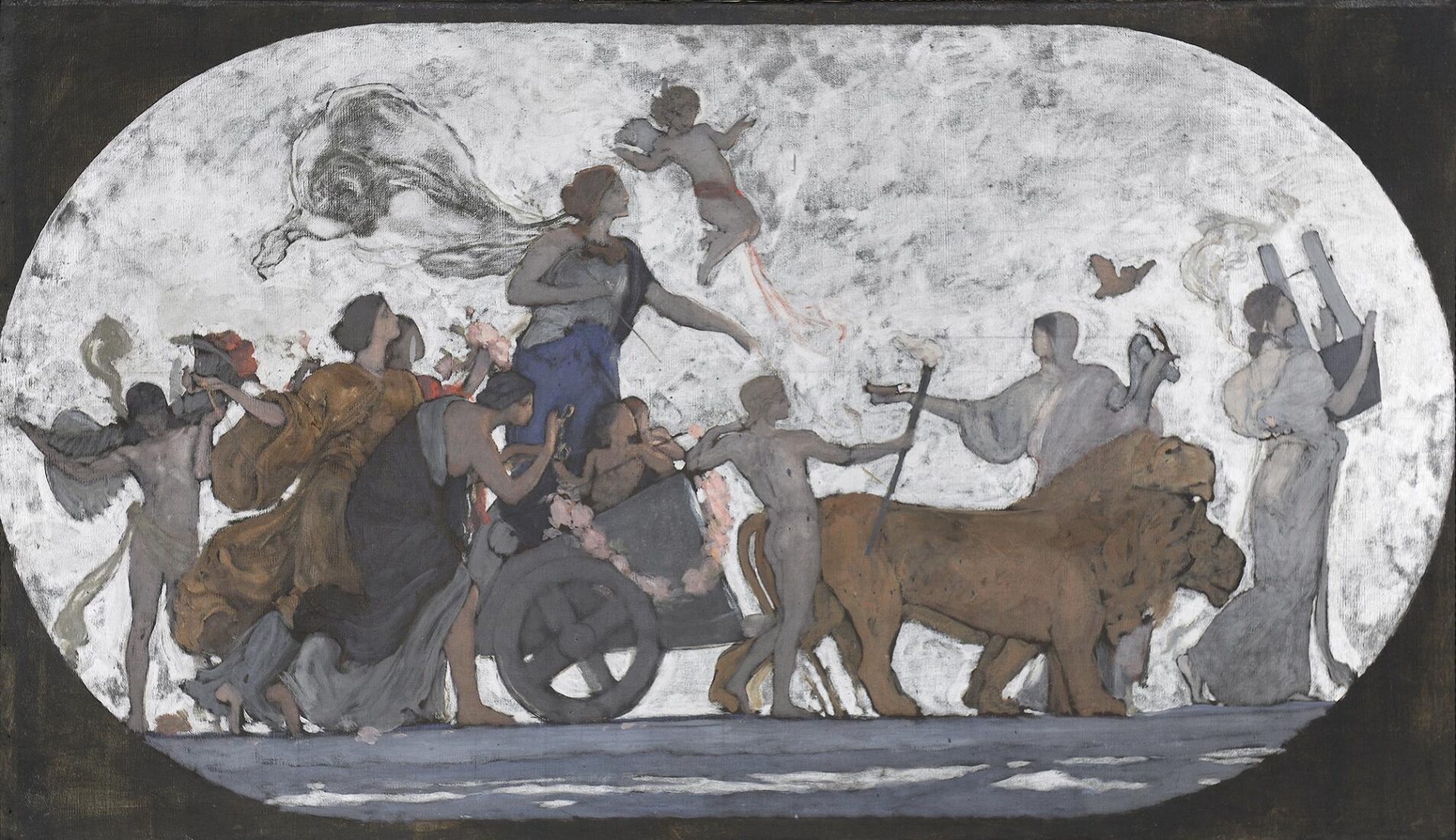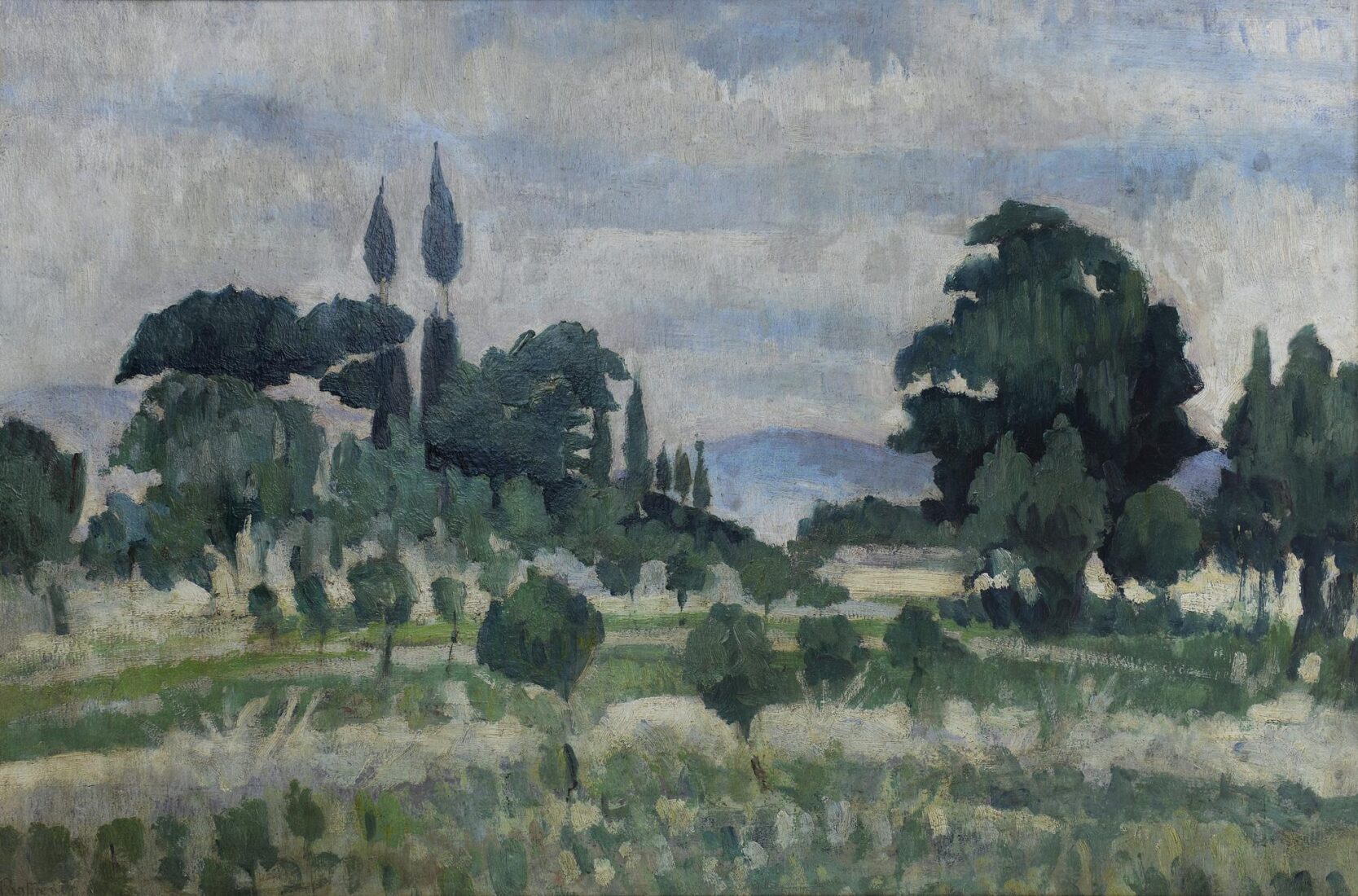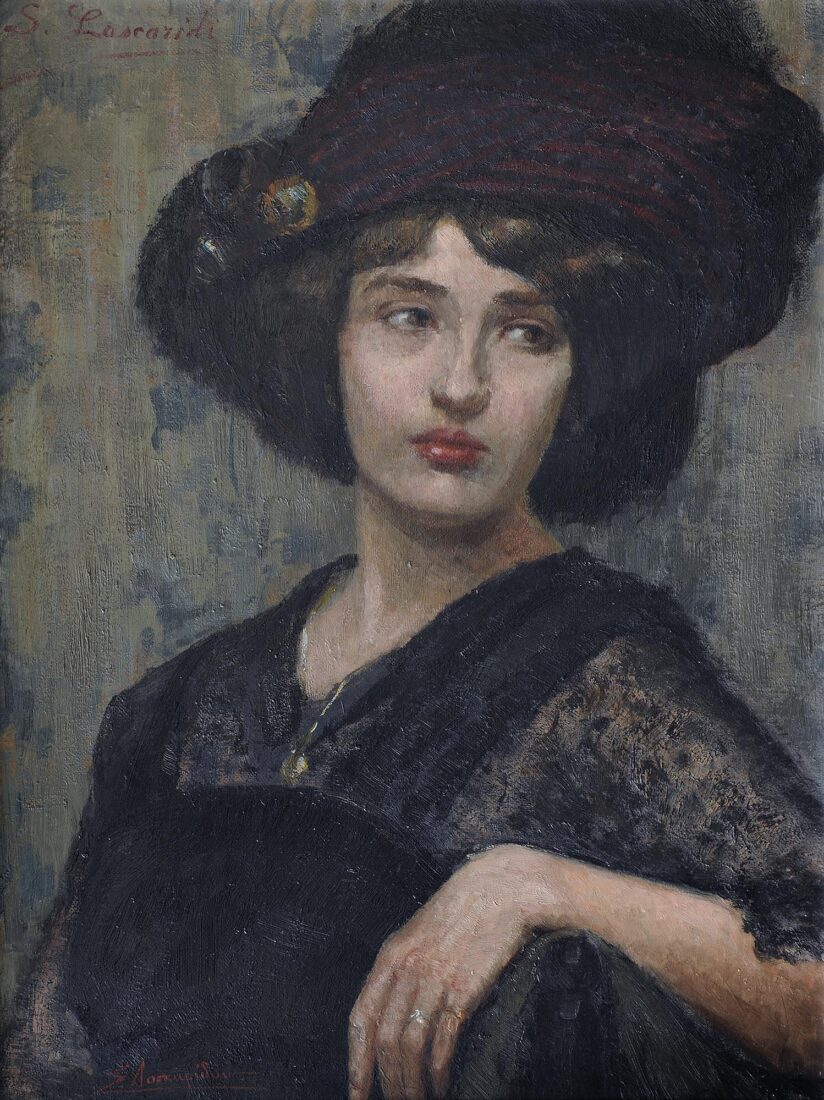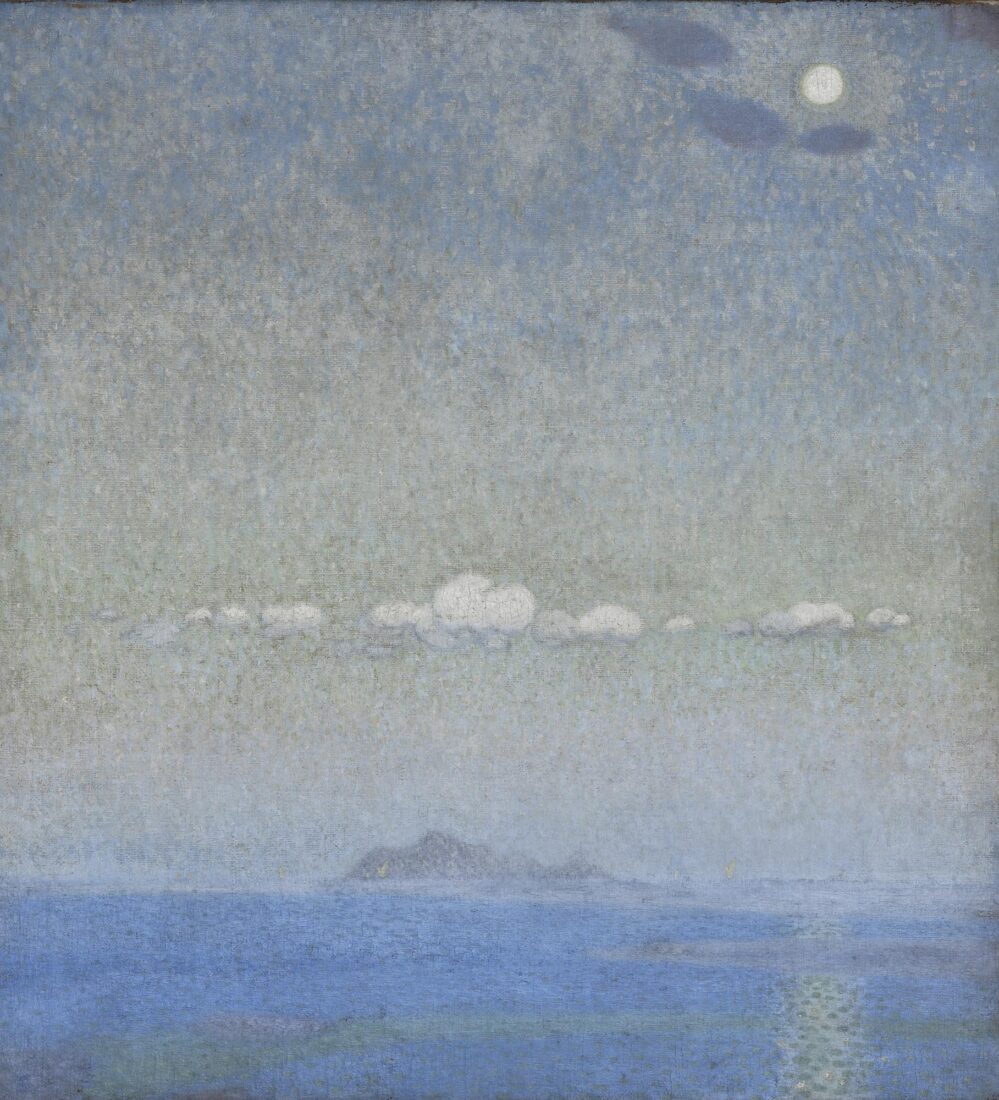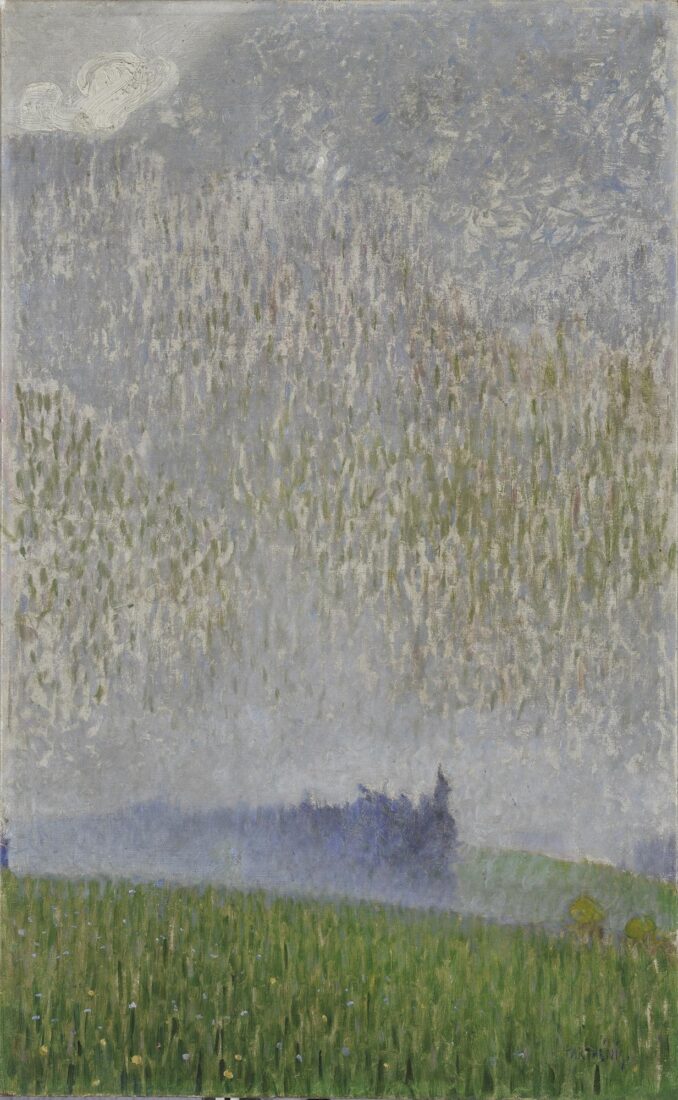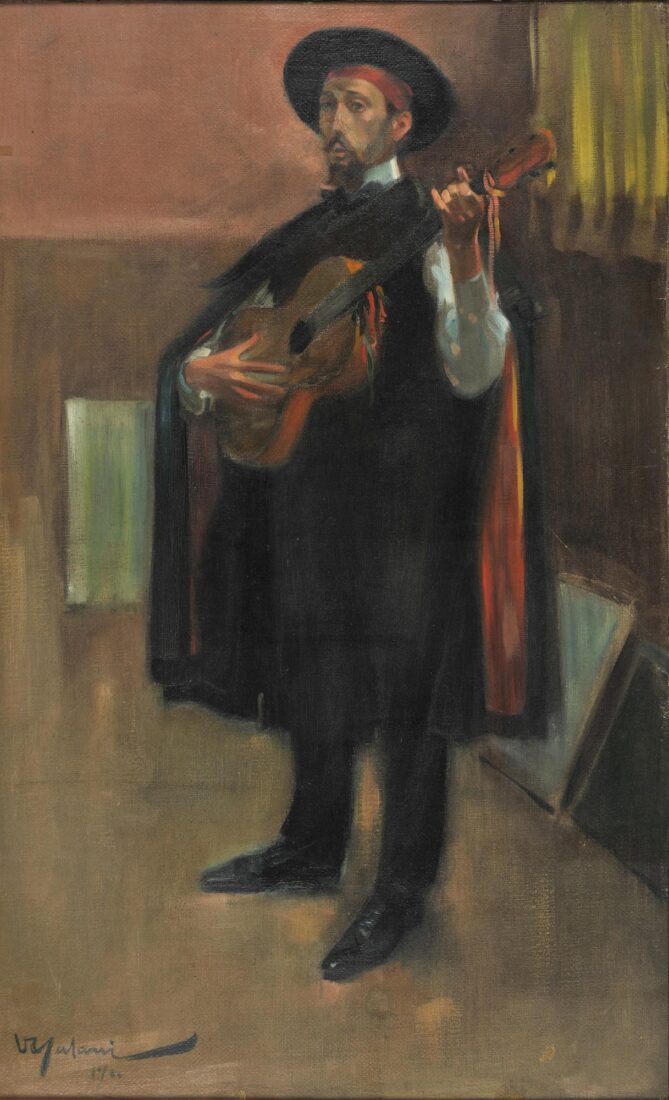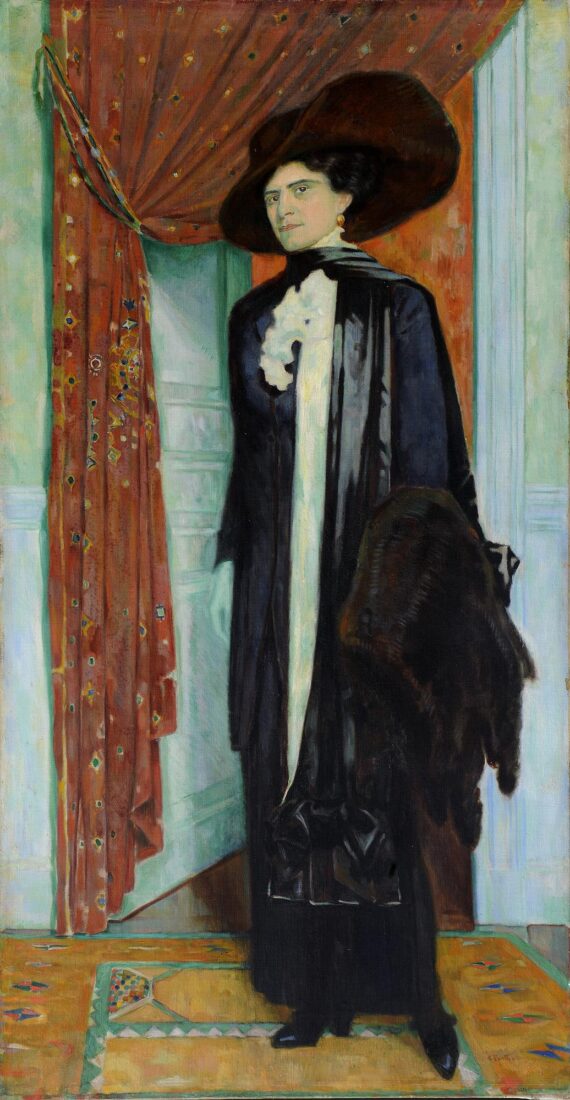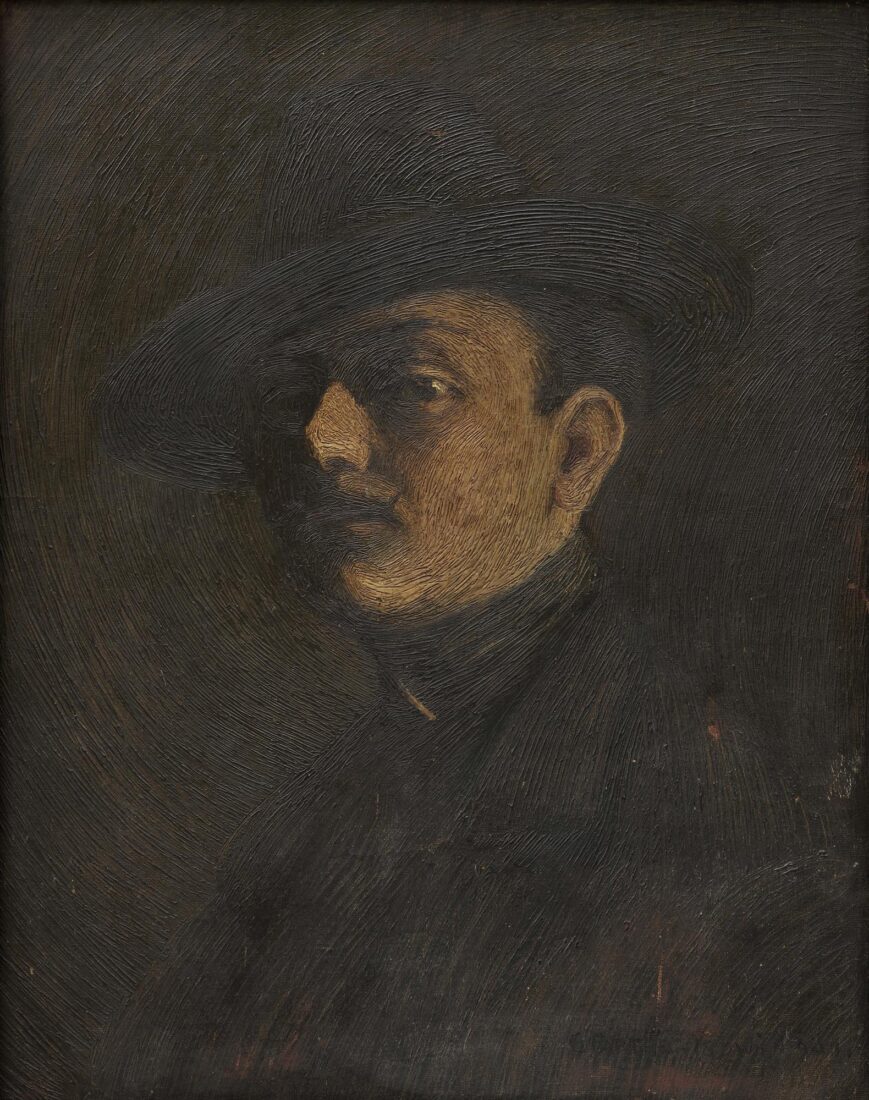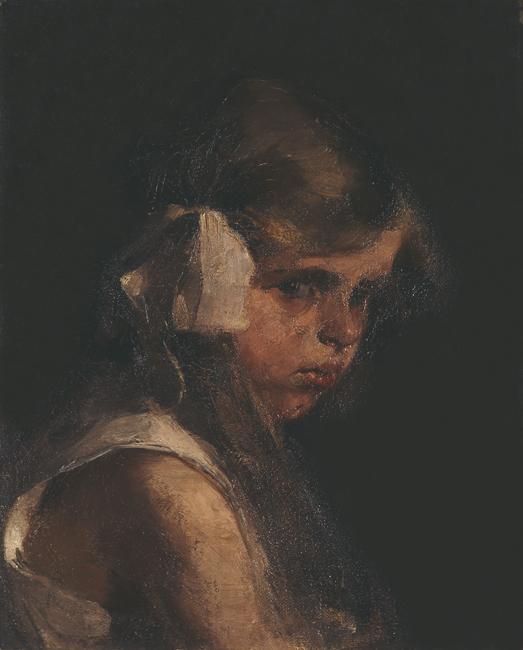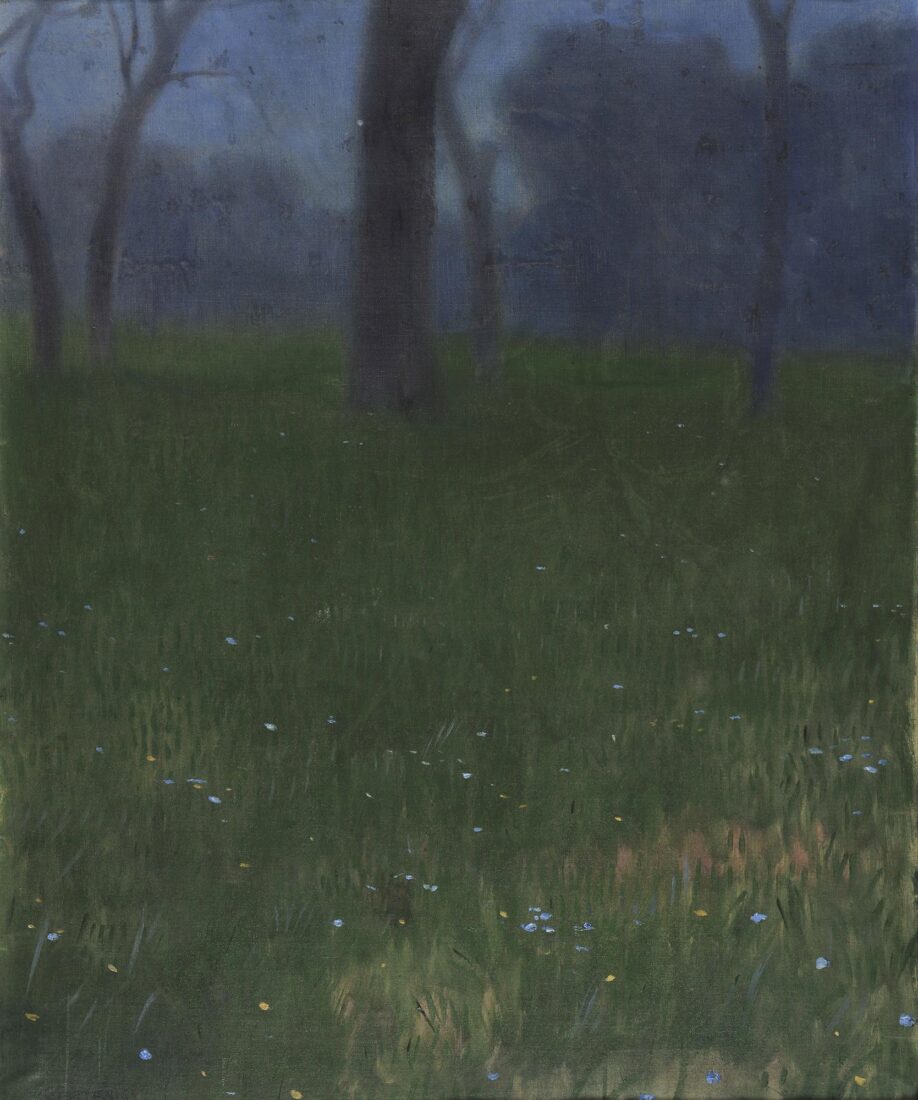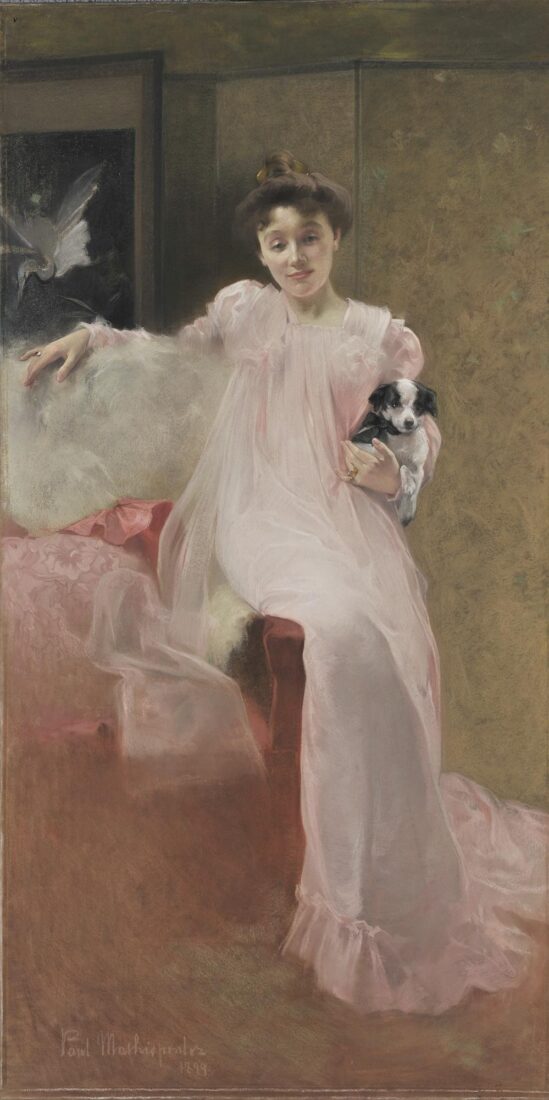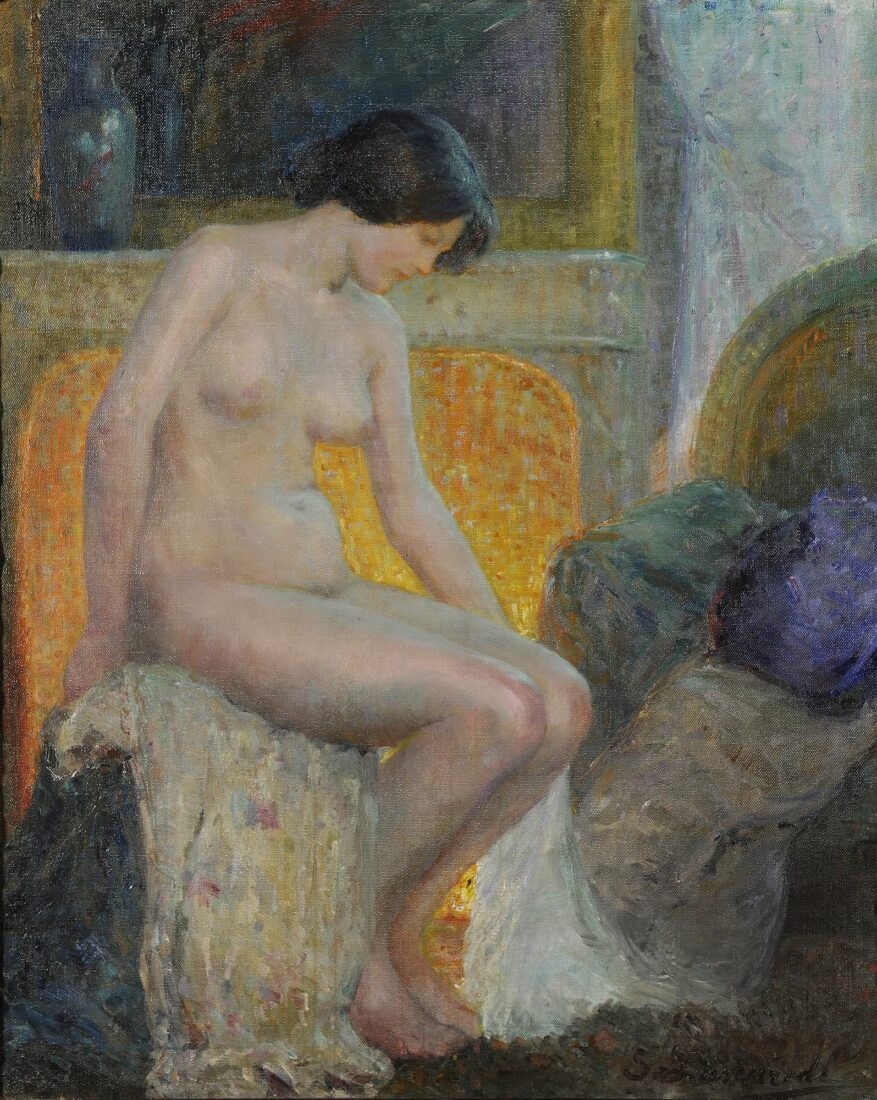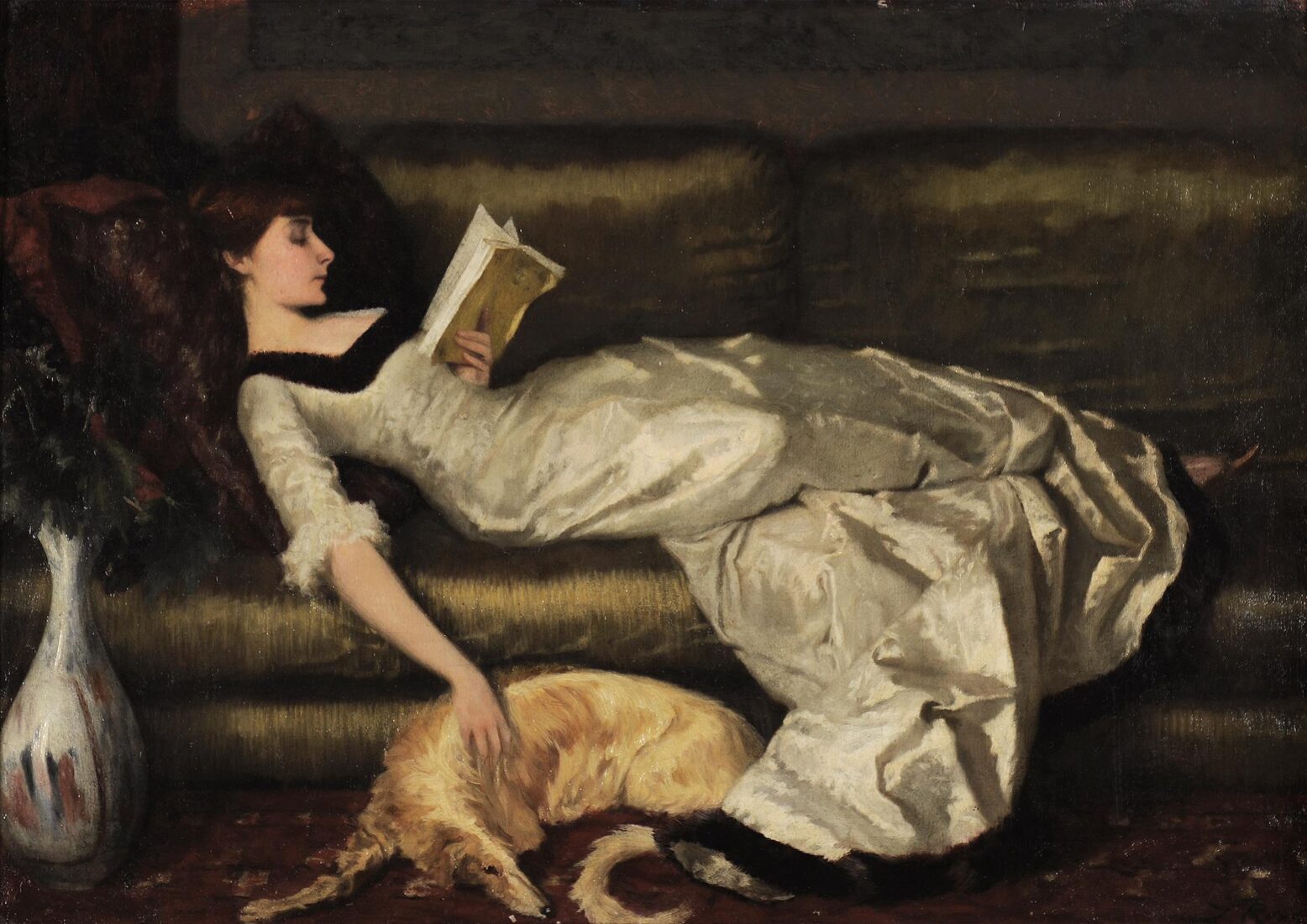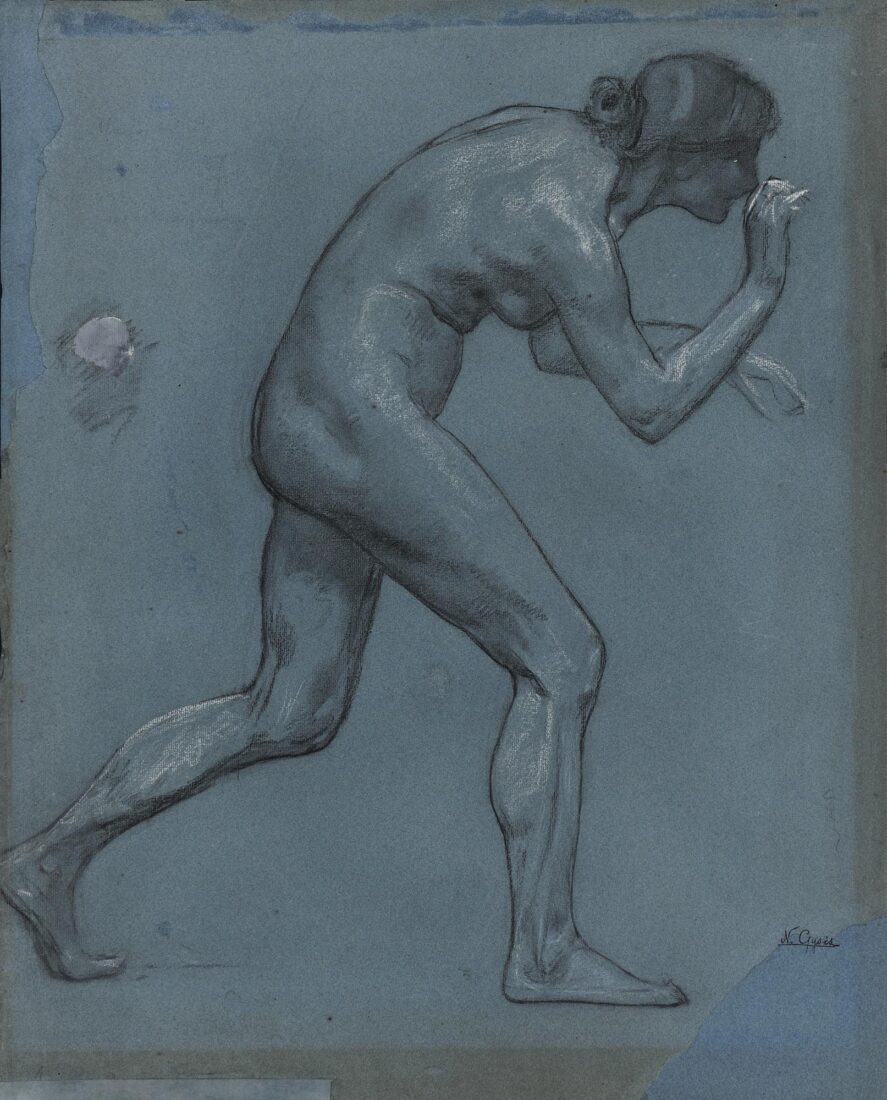

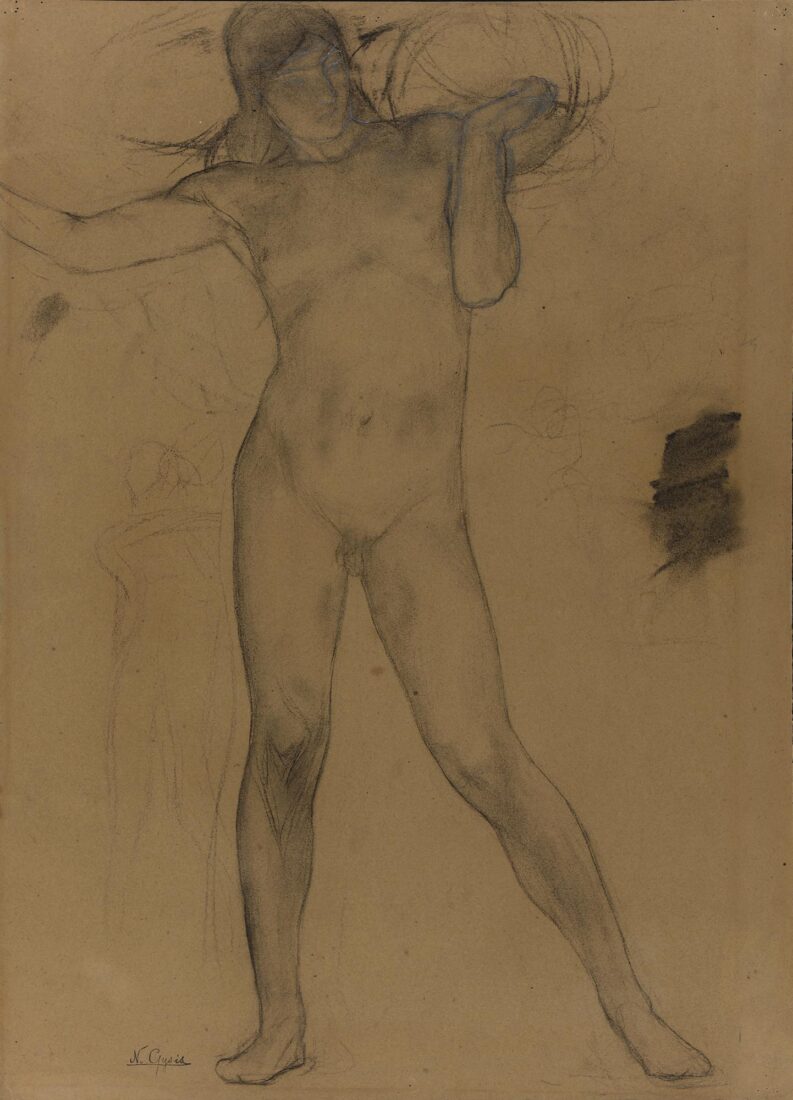
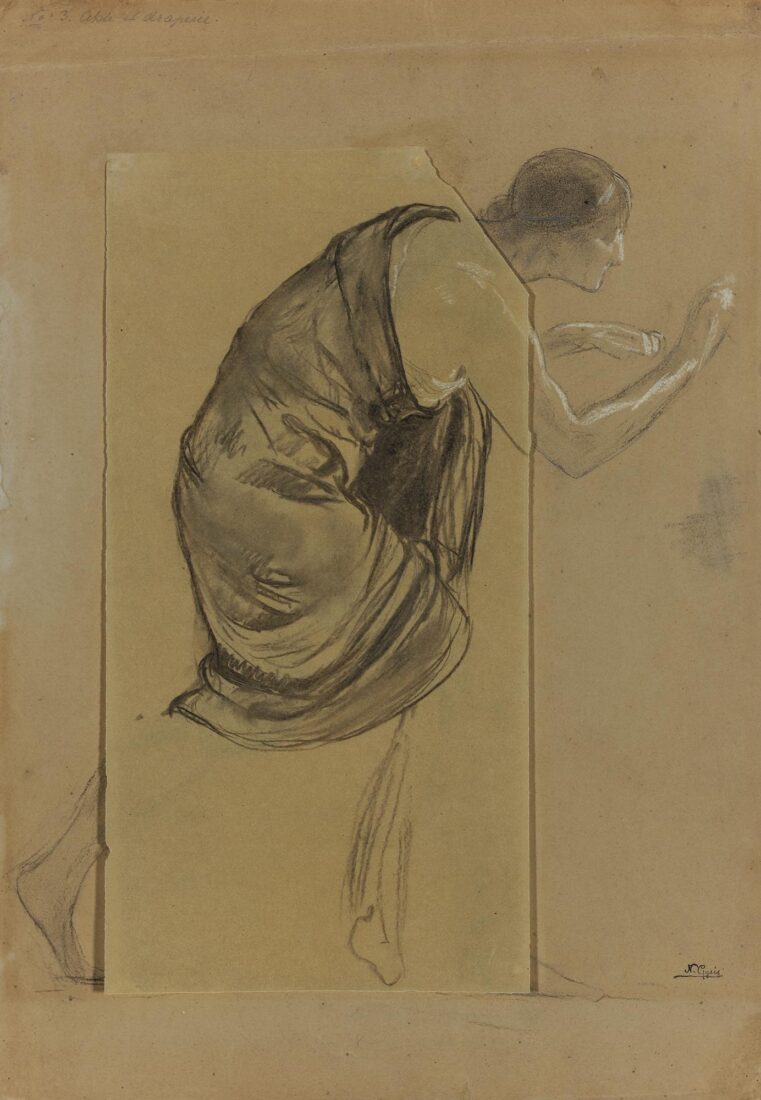
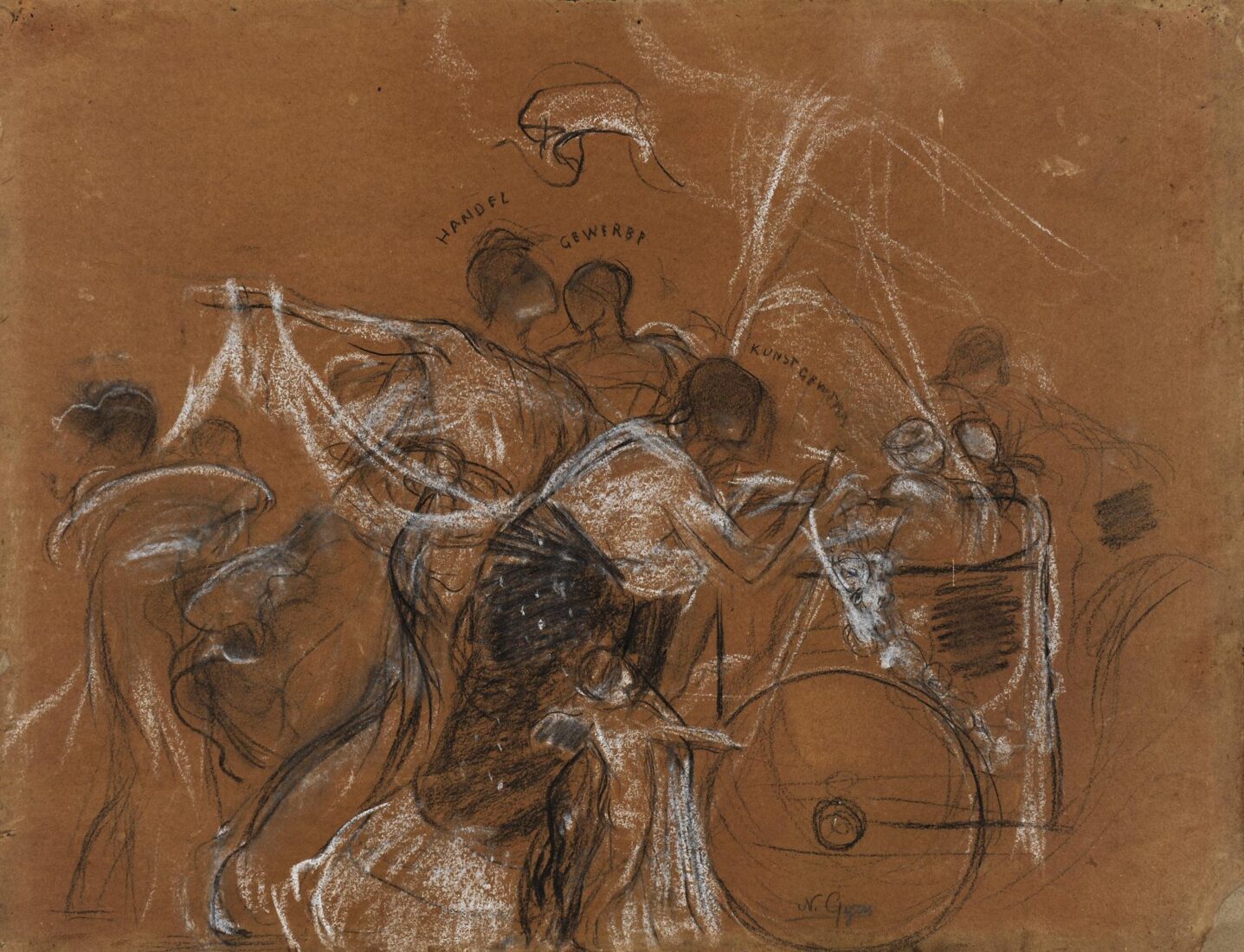
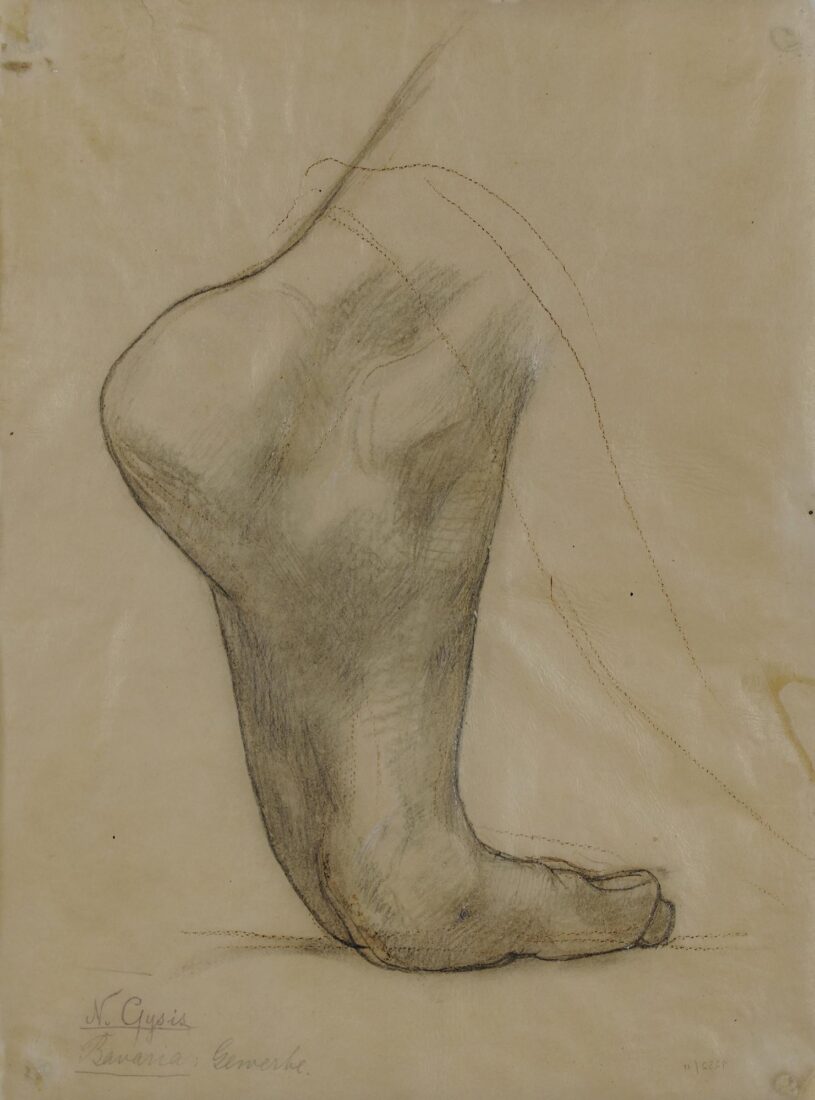
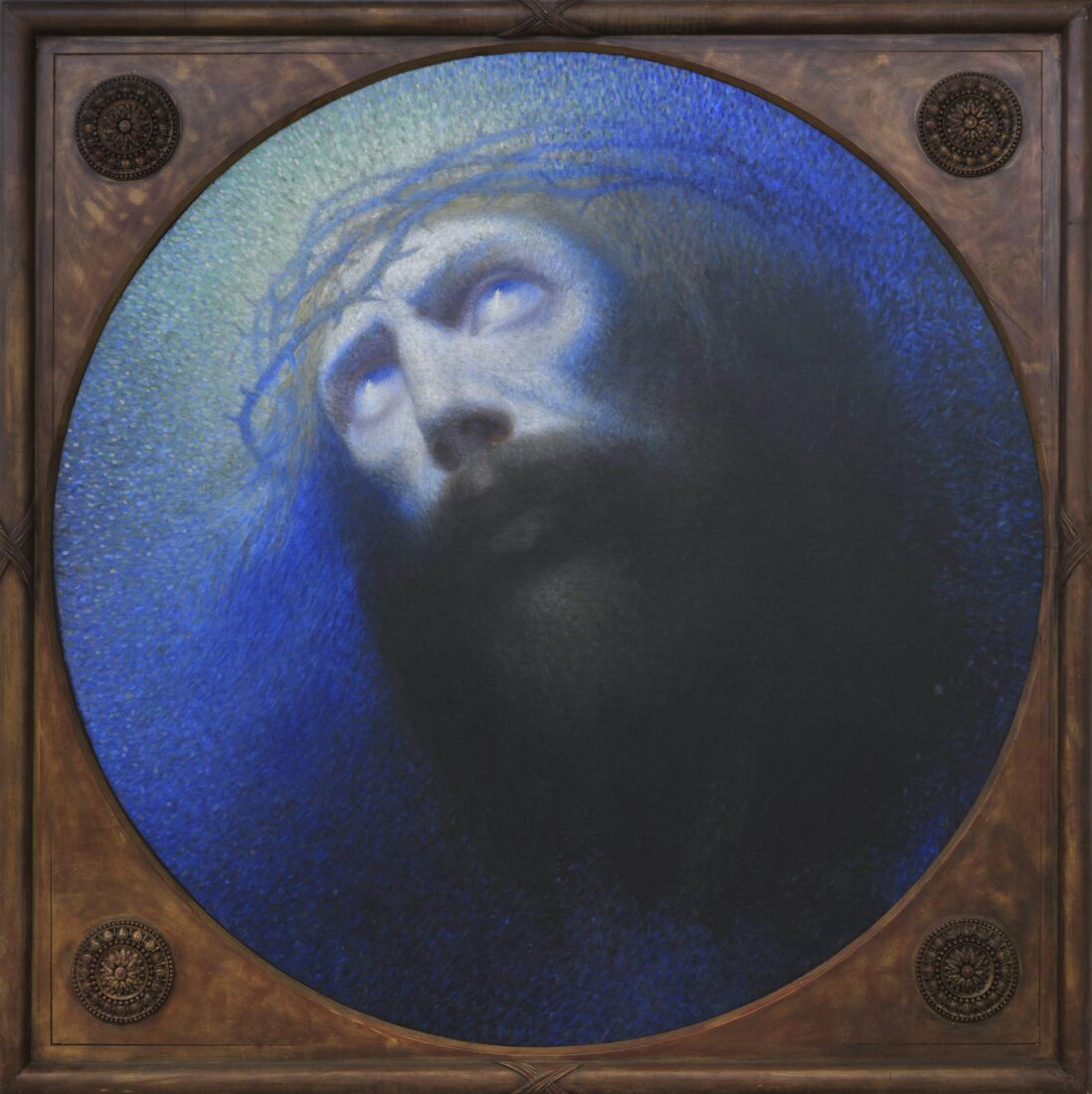
This monumental circular composition by Konstantinos Parthenis depicting the over-life-size head of Christ rivets the eye of the visitor to the National Gallery. Christ, here a mature bearded man wearing the crown of thorns, turns his tearful, agonized gaze heavenward. A torrent of yellow-gold light replaces the halo and bathes the divine face, bestowing on it an otherworldly glow and emphasizing its modeling.
The humanized dogma and the dramatic rendering of the Passion belong to the iconography of the Catholic Church as it was formulated in the time of the Counter-Reformation and dominated the Baroque (17th century). Parthenis’ Christ belongs to a typology frequently encountered in El Greco, but this specific composition appears to be inspired by a similar circular composition by Guido Reni. The subject, the emotional charge, the dominant blue palette, and the pointillist technique classify this mature work by Parthenis within the Symbolism of the Vienna Secession, where he did his apprenticeship as a young painter.
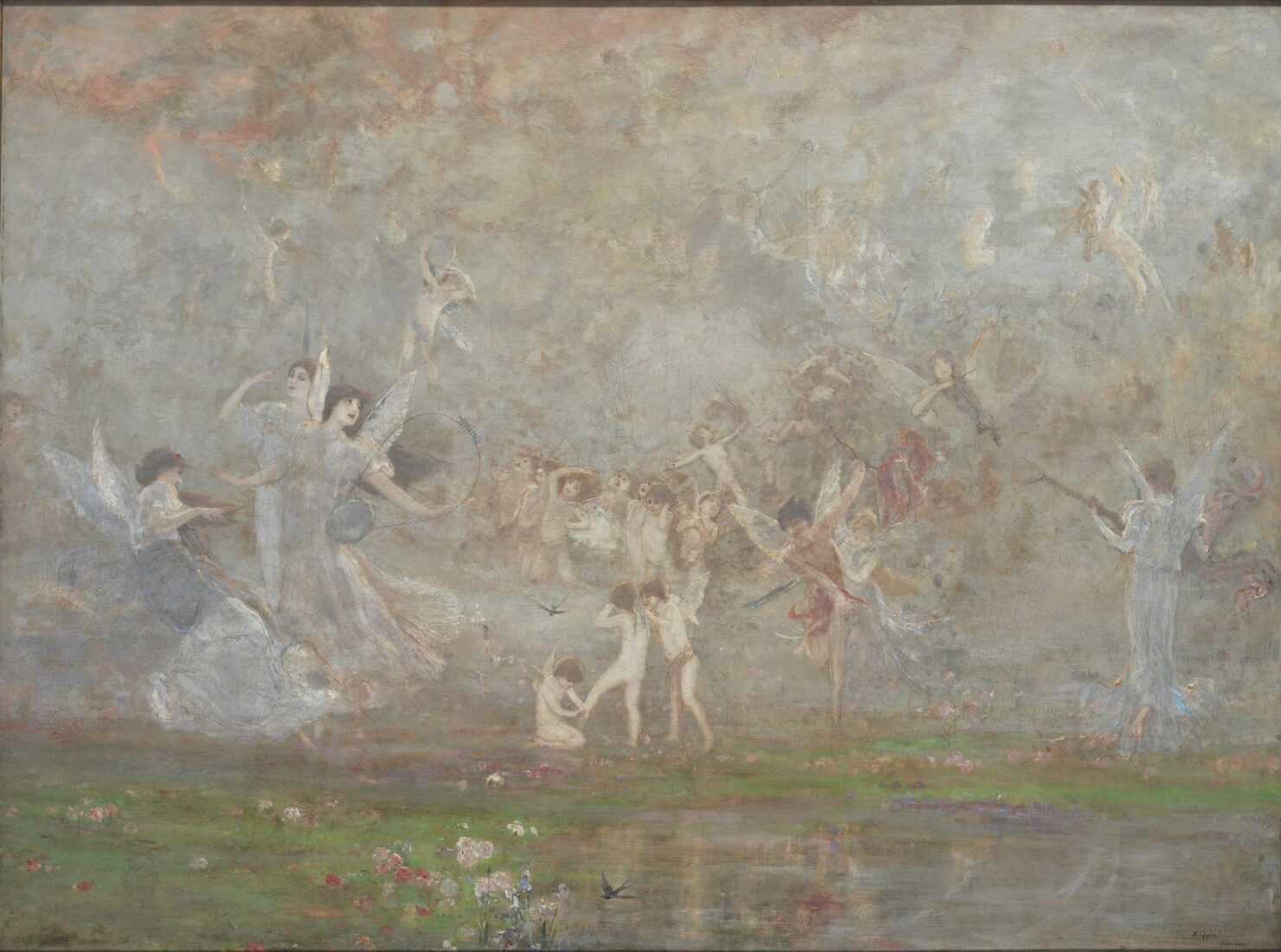
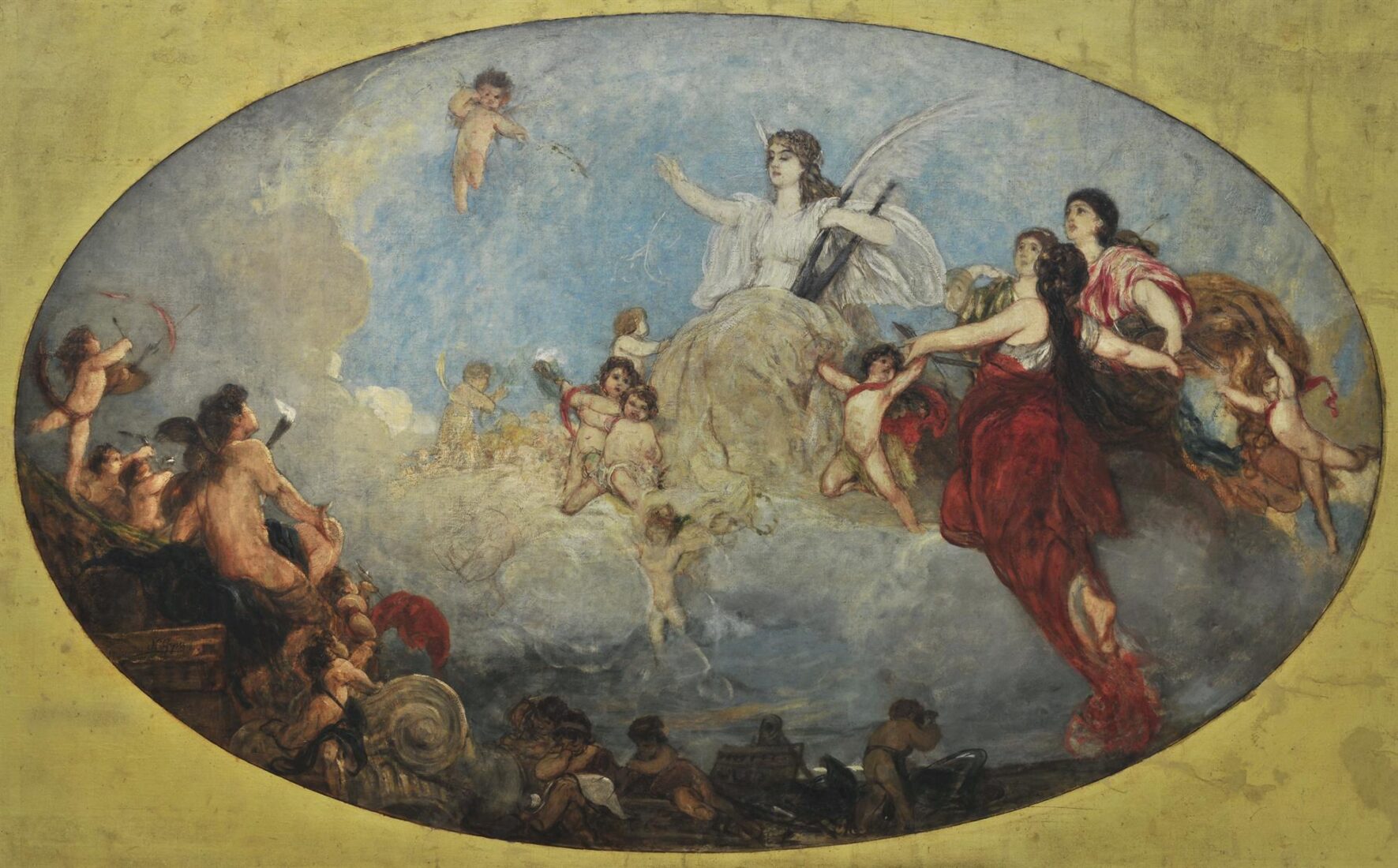
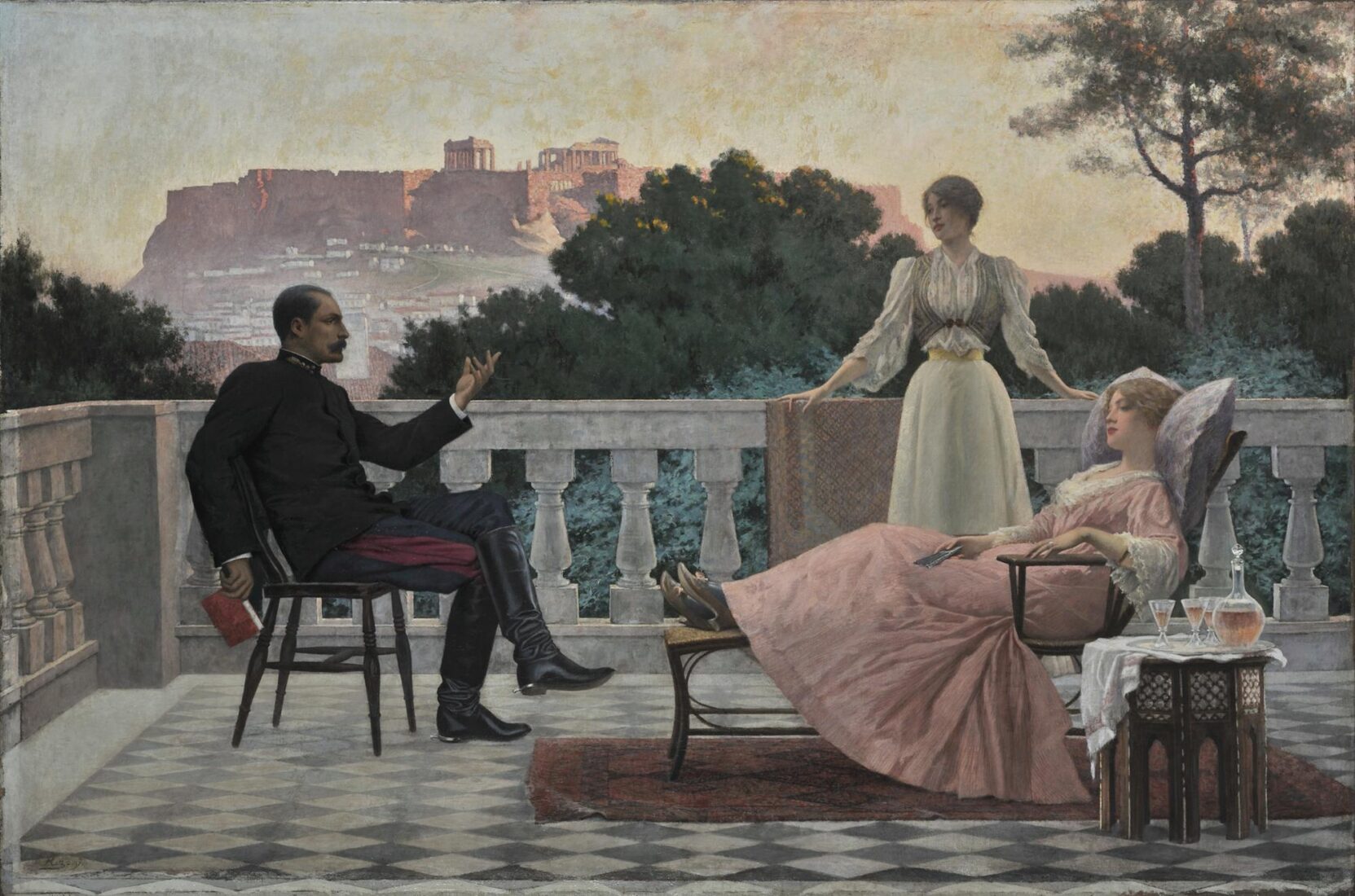
Iakovos Rizos, who studied in Paris, expresses the spirit of the Belle Epoque, that is, of the art developing in Paris around 1900. Beautiful, elegant women portrayed in luxurious palaces or gardens are the main theme of his paintings. This is a pleasant, straightforward painting.
Painted in 1897 and receiving the silver medal in the 1900 Paris World Fair, the “”Athenian Evening”” is one of the most charming works dating from the late 19th century. The work expresses the mood of euphoria and well being characteristic of the wealthy bourgeois life in the late 19th century. On the terrace of a neoclassical house in Plaka, a handsome Cavalry officer is reciting verse to the delight of two beautiful Athenian ladies who are listening to him enchanted. A sweet sunset envelops the Acropolis in its orange veils in the background, infusing the forms and smelting them into the atmosphere. The work may ignore schools and Impressionist doctrines, yet it conveys a contagious poetic effect that speaks to the heart.
![Belle Epoque Lady [Portrait of Sophia Laskaridou]](https://www.nationalgallery.gr/wp-content/uploads/2023/02/79144_2000_2000-559x1100.jpg)
